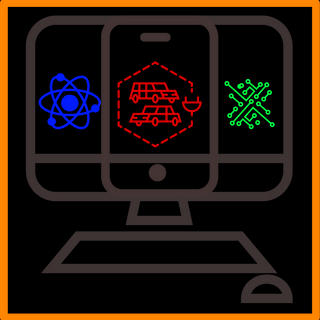iPad Pro vs Microsoft Surface Pro 4
- itstotallyawesome3
- Dec 14, 2016
- 4 min read

Apple's iPad Pro and Microsoft's Surface Pro 4 are two of the most powerful tablets yet, but they're not designed for the same type of shopper. Aimed at creative types and those who like to play as much as they work, the 9.7-inch iPad Pro (starting at $599) and the 12.9-inch iPad Pro (starting at $799) each pack a speedy A9X processor and four speakers, and work with an optional Apple Pencil and keyboard cover.
The Surface Pro 4 (starting at $899) is a laptop replacement that uses a 6th-generation Core processor to run full Windows 10. It also includes both a built-in kickstand and a stylus (the Surface Pen), and its optional keyboard is excellent. After 10 rounds of battle between these tablets from Apple and Microsoft, the iPad Pro emerged as the winner, but the best choice for you really comes down to your needs.
Design:
The aluminum 12.9-inch iPad Pro is almost ridiculously large, sporting a ginormous 12.9-inch display. Made of sturdy magnesium, the 12.3-inch Surface Pro 4 is big, too, but it's more manageable because of its more compact footprint. The 9.7-inch iPad Pro is the most lightweight of the bunch, making it easy to bring to meetings or class.

Measuring 0.24 inches thick for the 9.7-inch version and 0.27 inches thick for the 12.9-inch model, the iPad Pro is thinner and lighter than the Surface Pro 4, but the 0.33-inch-thick Surface benefits from a built-in kickstand. With the iPad, you need to attach a cover to prop it up. In addition, only the Surface sports a full-size USB port, a mini DisplayPort and a microSD card slot.
When you add the Type Cover, the Surface Pro 4's weight grows from 1.7 pounds to 2.4 pounds. The 12.9-inch iPad Pro starts at a lighter 1.6 pounds and goes to 2.3 pounds when you add the Smart Keyboard. The 9.7-inch version of the iPad Pro weighs just 0.96 pounds by itself and just 1.5 pounds with the keyboard.

Winner: Surface Pro 4. While the iPad Pro is thinner and lighter — with and without the keyboard — the Surface's extra ports and built-in kickstand give it the edge.
Display:
The original iPad Pro has a larger, 12.9-inch canvas, compared to the 12.3-inch panel on the Surface. However, the Surface's display packs more pixels per inch than the iPad's (267 dpi versus 264 dpi) and is brighter than Apple's slate (382 nits versus 372 nits).
The 9.7-inch iPad Pro's screen sports a resolution of 2048 x 1536 pixels, giving it the same dpi as the bigger iPad Pro. It has the brightest display of the three devices, notching 423.8 nits.

The 9.7-inch iPad Pro has a distinct advantage over the larger iPad Pro and the Surface Pro 4: its True Tone display, which actively measures the brightness and light temperature in the room to adjust colors on the fly.
Winner: iPad Pro (9.7-inch). It has the brightest and most colorful screen of these three tablets.
Audio:
It's hard for two speakers to beat four speakers on a tablet. The larger iPad Pro's quad-speaker setup produces loud and surprisingly balanced audio, whether you're streaming Pandora or immersing yourself in a flick. The two top speakers on the iPad Pro handle the mid and high frequencies, and all four deliver bass. When you flip the tablet around, the two speakers now on top handle the mids and highs. Clever.
While not as powerful, the four speakers on the 9.7-inch iPad Pro impressed us in our testing, filling a small living room with sound; we heard driving guitars but not the best bass.

Powered by Dolby Audio, the two front-facing speakers on the Surface Pro provide a pretty good sonic punch. We heard almost no distortion during our testing, but the bass was lacking compared to on the iPad Pro, and the Surface didn't get as loud.
Winner: iPad Pro. The immersive audio experience makes this round an easy win for Apple.
Keyboard:
The Surface Pro 4's $129 keyboard is a necessity if you want Microsoft's tablet to replace your laptop. The improved design offers a more spacious layout, and the keys have an impressive 1.4 millimeters of travel, resulting in the best typing experience yet on a Surface.

Plus, the keyboard is backlit. Just as important, the Type Cover comes with a built-in touchpad, complete with a satisfying click.

Both the $149 and $169 Apple Smart Keyboards for the 9.7-inch and 12.9-inch iPad Pros, respectively, lack a touchpad, and have smaller keys with less travel. In fact, the 9.7-inch keyboard cover is really best for short messages rather than word processing. Neither iPad keyboard is backlit, either. The best thing going for the Smart Keyboard is that its fabric design makes the layout water-resistant, so it can shrug off spills.

Winner: Surface Pro 4. Microsoft's keyboard is cheaper yet more functional.
Pen/Pencil:
The Surface Pro 4 has one immediate advantage in this round, because Microsoft includes the Surface Pen with its product. Apple charges $99 for its Apple Pencil. The Surface Pen is also the only one of the two styluses to sport an eraser on its back. Plus, you can press the eraser button to quickly launch the OneNote app. When you're done writing or drawing, you can easily attach the Pen to the side of the Surface Pro's display. In contrast, there's nowhere to put the Apple Pencil.

The Apple Pencil's chief advantage over the Surface Pen is its lack of latency and much larger selection of apps. The Surface Pen feels fairly smooth when you're writing, thanks to its 1,024 levels of pressure sensitivity. Based on both my testing and impressions by our infographics artist, the Apple Pencil has even less lag.

The Pencil also has special sensors to detect not just pressure (number of levels not known) but also the angle of your hand. You can also use pen input and touch at the same time.The iPad Pro also benefits from a much wider selection of pen-enabled apps. We counted more than 300 Apple Pencil apps in the App Store, including Paper by FiftyThree (for sketching and layouts), Adobe Comp CC (for making layouts) and Pixelmator (for making fine photo edits).
Winner: iPad Pro. Although the Surface Pro 4's included Pen has an eraser and is easy to stow, the Apple Pencil offers a more precise and natural experience, and lots more apps.




Comments